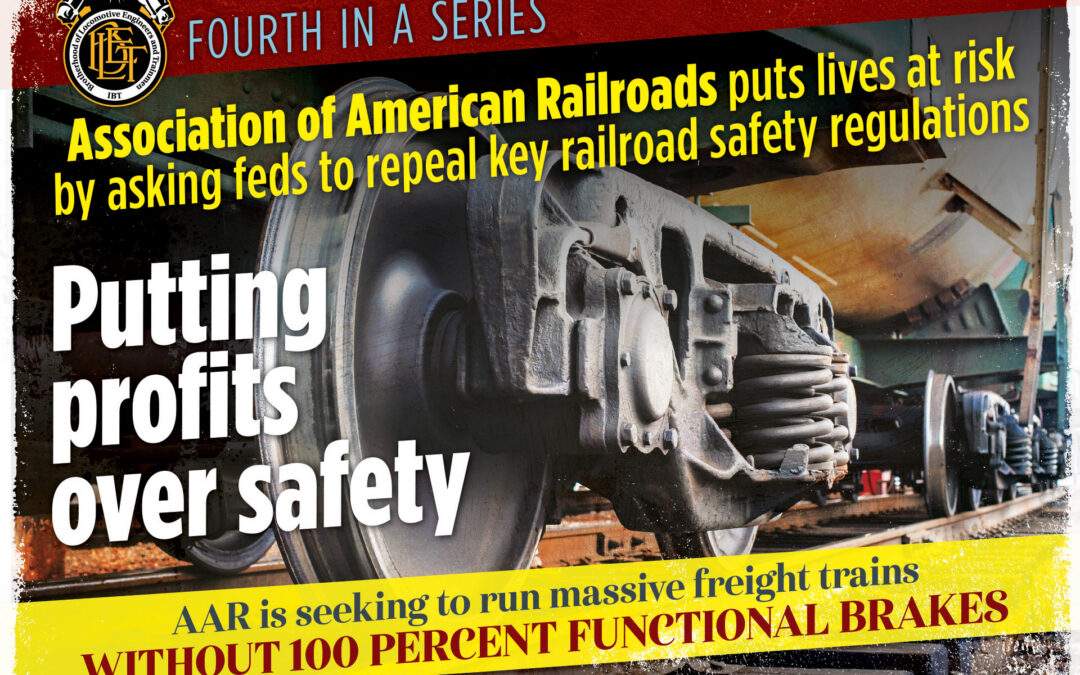Earlier this year, the U.S. Department of Transportation (DOT) solicited public feedback on possible federal safety regulations that could be repealed or modified to achieve “meaningful burden reduction while continuing to meet statutory obligations and ensure the safety of the U.S. transportation system.” Unsurprisingly, Class I railroads through the Association of American Railroads (AAR) jumped at the chance to put their profit-hungry agenda ahead of the safety of its workers and the general public by advocating to remove 80 time-tested safety rules from the books.
This week, we highlight how AAR is seeking to run massive freight trains for hundreds of miles with brakes that aren’t 100 percent functional.
It is widely accepted in America, where the car is the primary mode of transportation, that being able to stop your vehicle to avoid an accident is the safest approach to driving. Apparently, railroads disagree.
They are asking DOT to overturn a safety regulation (§232.103, part e), which reads as follows: “A train shall not move if less than 85 percent of the cars in that train have operative and effective brakes.” If this rule is overturned, railroads would be allowed to continue running trains en route between repair locations when more than 15 percent of its brakes are inoperable. How much more? The AAR does not elaborate.
This is a recipe for disaster in the era of Precision Scheduled Railroading (PSR), where trains are frequently over three miles long and can weigh hundreds of thousands of tons. The PSR operating model emphasizes deferred maintenance on key safety items, including brakes.
AAR’s request to eliminate this federal safety regulation is in addition to existing brake inspection waivers already on the books. The BNSF Railway, for example, has a waiver that allows trains to leave terminals if 5 percent of its brakes are inoperable.
Running trains with less than 85 percent of brakes functioning, as opposed to all of them, shows a disregard for safe train operations. Americans need to know what the railroads are trying to do: Cutting corners puts lives at risk.
The BLET will continue to examine additional AAR requests to waive safety standards.
Click below to read previous articles:
Part 1: Rail industry asks feds to overturn two-person crew rule.
Part 2: Rail industry asks feds to eliminate brake and mechanical inspections at the border with Mexico
Part 3: Rail industry seeks to game the system by obscuring accident data

